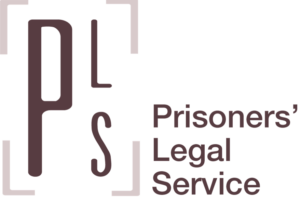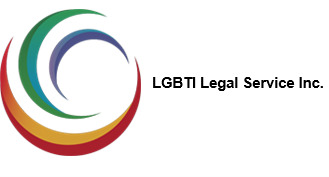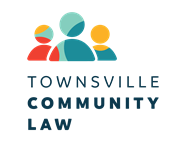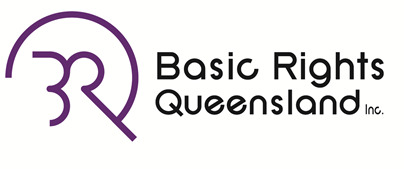Queensland’s Anti-Discrimination Act 1991 (Qld) is under review to ensure it is keeping up to date with the changing needs of society. An alliance of Queensland lawyers and advocates with expertise using the Anti-Discrimination Act to advance human rights has developed a 10-point plan for a fairer Queensland.
Queensland’s Anti-Discrimination Act was written 30 years ago. At the time it was world-class human rights law and represented a shift in the way we chose to live together in this state. A lot has changed in this time and some aspects of the law have now fallen behind contemporary standards. The Queensland Human Rights Commission is currently reviewing the Anti-Discrimination Act. This review is an opportunity for Queensland to again have world-class equality laws.
The alliance of Queensland lawyers and advocates has scoured other jurisdictions and pooled their many decades of collective experience to find better solutions to the biggest problems with our current anti-discrimination law.
They hope to empower other community workers, lawyers, individuals and groups to engage with the review process. This 10-point plan is available for others to use or refer to when engaging with the review. The more voices there are calling for similar reforms, the better chance we have of seeing a fairer Queensland.
Ten point plan for a fairer Queensland
There are many dated, discriminatory exemptions and excuses in anti-discrimination laws that are out of step with contemporary society and reinforce harmful social constructs, stereotypes and stigmas. These should be removed.
What is the problem with the current law?
The Anti-Discrimination Act is 30 years old and some things that seemed reasonable in 1991 are now widely regarded as wrong. Over the years, other exemptions, excuses and defences have crept into the anti-discrimination regime – sometimes as a reaction to one specific incident or hype around a particular case. Many of these exemptions and changes have had unexpected or excessive flow-on effects.
For example:
- Where prisoners or people on community service orders experience sexual harassment or discrimination while serving their sentence, the state government is a ‘protected defendant’ and it is much more onerous to bring a complaint against them. The government should have the same obligations to follow the law as everyone else, and all people in Queensland should have the same level of protection.
- Non-profits and clubs can discriminate when providing goods and services and deciding membership. Many people with protected attributes rely on these services, and protections against discrimination are vital.
- Reproductive healthcare services can discriminate on the basis of sexuality, and anyone can discriminate on the basis of gender identity when hiring someone to work with children. We need protections to ensure a safe and just society for LGBTI communities.
- Accommodation providers can discriminate on the basis of lawful sexual activity (e.g. hotel or accommodation providers can legally evict or overcharge sex workers). This stigmatises sex workers and forces them into unsafe work practices and circumstances.
- Religious institutions that employ people including in roles funded by governments, such as community services, hospitals, aged care and schools, can discriminate against staff who ‘openly’ have attributes (usually related to sexuality) that are ‘contrary’ to the employers’ religious beliefs.
- Insurers can discriminate against many groups including people with a history of any mental illness, even if that illness has negligible effect on insurance risk, such as anxiety, or the condition is diagnosed, treated and well managed. This outdated law entrenches and perpetuates an old stigma about mental illness and, perversely, deters some people from accessing mental health care.
Is there a better solution?
The best solution is to simply remove all the discriminatory exemptions that allow unfair treatment.
The list of people protected by anti-discrimination law in Queensland is out of date and does not deal well with intersectionality (when a person has a combination of attributes, such as an Indigenous woman). The list of people who are protected needs expanding and greater flexibility to better match the way people live and interact.
What is the problem with the current law?
Currently there are only 15 attributes (e.g. race, sexuality, religion, disability, sex, gender identity and age) protected by anti-discrimination laws in Queensland, and far fewer attributes are protected against vilification and harassment. Many people, such as victims of family and domestic violence and other forms of interpersonal violence (e.g. elder abuse), were not recognised as needing anti-discrimination law protection in 1991 and are not included. There is currently no way to expand the list of attributes other than Queensland Parliament amending the legislation.
Some people are discriminated against because they have more than one protected attribute or because of the way certain attributes combine (intersectionality). The current law does not respond to this at all. For example, women, people with parental responsibilities and single people are all currently protected by the Anti-Discrimination Act against discrimination in the area of tenancy and accommodation. However, discrimination is only unlawful if one particular attribute can be proved to be a substantial reason for the discrimination. This means that if a single mother is refused a rental because she is a single mother, she would need to establish which one of her gender, parental responsibilities or single status was the basis for the landlord’s discriminatory conduct.
We need better coverage for more recently recognised attributes and intersectionality, and flexibility to ensure other areas of social inequality are protected in the future.
Is there a better solution?
We need four actions to fix the problem with the narrow list of attributes.
Firstly, we should add more attributes to the list. There are other individuals and groups who most people in Queensland would accept should be protected from unfair treatment, including:
- survivors of domestic and family violence and other forms of interpersonal violence
- people with diverse immigration status
- people with low socio-economic status or who are from disadvantaged social origin
- people with irrelevant criminal history or medical records
- people with diverse genetic characteristics
- people with low literacy and numeracy
Some of these groups are protected by other laws in particular contexts but not by the Anti-Discrimination Act. For example, survivors of domestic violence are protected from discrimination at work if they are employed by the State of Queensland but not in any other workplaces or situations. This means that currently any other employer could refuse to allow a victim of domestic violence to access their annual leave urgently to flee an unsafe home, or even dismiss them because their violent ex-partner has been causing disruption in the workplace.
Secondly, the law should allow people to combine attributes to protect people experiencing intersectional disadvantage. There are solutions to this in Canadian law where discrimination ‘… on one or more prohibited grounds of discrimination or on the effect of a combination of prohibited grounds is also unlawful…’, and in the United Kingdom where it is unlawful to discriminate against someone ‘… because of a combination of two relevant protected characteristics’.
Thirdly, there are a range of Commonwealth laws (in Australia) that deal with discrimination on the basis of sex, age, disability and race and that do not require anyone to prove that their protected attribute was the main or only reason for the discrimination. In those laws, it is only necessary to prove that the protected attribute was one of the reasons for the discrimination. We should adopt this position in Queensland, too.
Finally, we can future-proof the law by making it possible for the courts to find that other protected attributes exist in the future. The new protected attributes would need to relate to systemic or historical disadvantage (they could never be things like ‘too wealthy’ or ‘plays cricket’) similar to the protected attributes on the existing list.
Sometimes true equality means people need to be treated differently or have access to special services to ‘level the playing field’. The law about this is complicated and there are too many excuses for not adjusting to accommodate difference. A fairer balance is needed.
What is the problem with the current law?
Sometimes there is a standard policy or requirement that everyone has to follow BUT someone with a protected attribute is disadvantaged by that same treatment and needs something different. For example, a staff uniform policy might say no head-coverings – the rule applies equally to everyone but seriously disadvantages people who cover their hair for religious reasons. Or a person might need special facilities or adjustments, such as an interpreter or a ramp, to ensure they can access an activity, facility or service.
Currently the law says you have to look at what is reasonable to know whether adjustments or changes should have been made and the biggest, often only, focus is the financial cost of making the adjustment or accommodating the person with the protected attribute. This law was written at a time before we really knew how to explain the true value of including people with diverse abilities, races or genders, and it gets the balance very wrong. It also falls well short of meeting the obligations owed by Australia and Queensland for example under the Convention on the Rights of Persons with Disabilities that Australia signed up to in 2007.
Is there a better solution?
We need to have the advantages of inclusion and diversity written into the law. It is important that there are positive statements in the legislation to remind people that there are specific benefits to certain individuals and groups that they need to think about when accommodating people with protected attributes, well beyond the negative considerations of the direct cost. This reflects a human rights approach.
Also, other jurisdictions have modernised provisions about adjustments and special facilities. For example, most European countries use human-rights language to help find the proper balance. Instead of focusing on cost and ‘reasonableness’, they say indirect discrimination (imposing standard conditions that unfairly disadvantage people with particular attributes) is unlawful unless it ‘is objectively justified by a legitimate aim and the means of achieving that aim are appropriate and necessary’. This still makes for complicated law but, if it is correctly applied, it ensures that decision makers are asking themselves the right questions about inclusion and substantive equality and that they are taking a globally accepted human-rights approach.
Another option to fix this problem is to say that any refusal to accommodate or adjust for a person with a protected attribute is unlawful unless it is strictly necessary to impose the standard, condition or requirement without adjustments. This is quite straightforward and easy to understand, which reduces complexity and legal costs for everyone involved. Queensland’s Human Rights Act 2019 (Qld) uses this factor in its balancing test for compatibility.
Either way, the law needs to reflect our modern understanding of the many ways diversity and inclusion elevate and improve all of our lives and the places we share in the long term, rather than focusing on what it costs in the moment.
Treating someone badly because of their race, sex, disability, age, gender identity etc. should be prohibited outright. Currently it is necessary to compare how people are treated; this should be changed.
What is the problem with the current law?
To prove direct discrimination in Queensland, you need to show you were treated less favourably (worse) than someone else who did not have the same protected attribute as you, known as a comparator. The comparator is a real or hypothetical person who would be treated better in the same or similar circumstances. In most anti-discrimination cases, a comparator is complicated and difficult to establish and construct. This is a barrier for many people to accessing justice.
The test is also legally complex because of the way the legislation is currently drafted. Cases that seem quite straightforward can be tied up in complex legal processes for a very long time. The biggest arguments are about whether the comparator in any given situation would also have some of the same features as the person with the protected attribute when the features also exist in the wider population. For example, a Māori man might have moko (a cultural tattoo) on his face, but some other people who are not Māori also have face tattoos. If a Māori man is asked to leave a restaurant because of his tattoo, clearly you should compare the treatment of him to someone who is not Māori. But if he brings a complaint under the current law, he might have to deal with a lengthy argument about whether that other non-Māori person (the comparator) also had a tattoo on their face and if so, would that other person have been treated the same way. In 2016, the Queensland Court of Appeal had to decide if the comparator for a deaf person also could not communicate in spoken English.
Is there a better solution?
Some other jurisdictions have removed the comparator from their laws, including Victoria. In Victoria they have made it unlawful to treat someone ‘unfavourably’ because of a protected attribute, rather than ‘less favourably’. It is still necessary to prove mistreatment because of a protected attribute, but there is no need to compare that treatment to someone else. This is fairer and much easier to understand and apply.
Another potential solution can be found in the Racial Discrimination Act 1995 (Cth), which makes it unlawful to do ‘… any act involving a distinction, exclusion, restriction or preference based on race, colour, descent or national or ethnic origin which has the purpose or effect of nullifying or impairing the recognition, enjoyment or exercise, on an equal footing, of any human right or fundamental freedom in the political, economic, social, cultural or any other field of public life’. This is a rare case of legal drafting that is harder to read but easier to use.
In some other countries the anti-discrimination law talks instead about ‘imposing burdens and disadvantages on‘, and ‘withholding benefits and opportunities from people‘ with protected attributes without any need to demonstrate how people without protected attributes experience similar situations.
Whichever words are preferred, the key to fairer and better anti-discrimination laws is removing the need to compare.
Instead of making victims prove why they were mistreated, the badly-behaved party should have to explain themselves and show it wasn’t discrimination.
What is the problem with the current law
Currently the person who has been mistreated has to establish all the facts necessary to prove discrimination occurred. While many people can prove that they have been treated improperly, and they can prove that they have a protected attribute, unless someone has said it out loud or written it down, it is sometimes very hard to prove that the reason for the treatment was the protected attribute.
To help deal with that problem in Queensland, it is possible for decision makers to ‘draw inferences’ and to accept that a connection exists where it seems obvious that the treatment was because of the attribute. But what seems obvious to a decision maker who is a lawyer, with a certain range of life experience, is not always the same as how things are experienced by other people. This makes ‘drawing inferences’ actually quite complicated and can disadvantage people in situations that are more distant from the life experiences of the decision makers.
This also means that the most insidious types of discrimination – systemic and unconscious – are the hardest to address.
Is there a better solution?
One solution is to partially ‘reverse the onus of proof’ and make the person who engaged in the mistreatment explain themselves and their reasons. Australian employment law has an example of this. Under the Fair Work Act 2004 (Cth), if a person can prove they were negatively treated in particular ways and that they had a protected attribute (or other relevant protection), then the ‘onus of proof’ shifts. The person who had responsibility for the treatment being complained about, usually the employer in that context, then has the responsibility of explaining why they did it and how their reasons are not discriminatory or otherwise unlawful.
Having a reverse onus of proof in Queensland law would mean that we would not need to rely so much on assumptions and instead hear real evidence about reasons.
The current law mostly deals with remedies for the harm caused by discrimination rather than the positive steps needed to make Queensland fairer. The law should set out who has duties to prevent discrimination and protect others from harm, and what those duties are.
What is the problem with the current law?
Most people who experience discrimination simply want it to stop, and to prevent it from happening to someone else.
But current anti-discrimination law is mainly designed to address serious harm caused by discrimination, sexual harassment and vilification. There are a couple of significant problems with this design. One is that it makes the whole equality law regime very negative – it deals only with the terrible after effects of the worst conduct but does little to stop it from happening again.
It also means that no one can be compelled to create safe environments that actively encourage diversity and seek to prevent mistreatment. It is often possible to predict discrimination occurring, due to the way people already interact in a particular environment, but there is almost nothing that can be done until the worst happens. Knowing you could bring a case if something really bad happens is small comfort to many people putting up with a difficult environment.
Is there a better solution?
Many other states and the Australian Government are looking at this same issue. For example, it was part of the recent Respect at Work report into sexual harassment in the workplace undertaken by the Australian Human Rights Commission.
There are a range of ways that positive statements can be included in law to encourage people to behave in particular ways. The best positive statements are written as duties, and there should be consequences for non-compliance with those duties – even where harm is not yet caused to anyone.
Positive duties in Queensland should include a duty to:
- make reasonable adjustments for people with disabilities, older persons and others
- maintain a policy and provide training to prevent and stop sexual harassment in controllable environments such as schools and workplaces
- monitor and take down hateful and racist speech that is posted to social media and similar places.
Currently discrimination complaints can only be made in the year following the discrimination occurring. This is not long enough, especially if there has been trauma, and for children who do not have parents or carers capable of stepping in.
What is the problem with the current law?
The time to complain is too short for a number of reasons. People are highly reluctant to complain when they are still within the environment in which they are mistreated for fear of further mistreatment and victimisation. Additionally, many people who experience sexual harassment, discrimination or vilification are traumatised and mental illness is a common injury. These people need time to recover first before they can take legal action.
There are time limits to bring most kinds of legal action but they usually work differently for children. The time limit normally does not start to run until the child is 18. For example, the time limit to bring a claim relating to an injury caused by negligence is usually three years. Because it only starts to run from the date a person turns 18, anyone harmed because of negligence as a child can bring a claim up until they turn 21. But a six-year-old child who is harmed because of discrimination must bring their claim within 12 months of the date the discrimination occurs. A seven-year-old child is not able to bring legal action themselves and so someone else must do it for them – and unfortunately not every mistreated child has someone like that in their life.
Is there a better solution?
The time to complain should be extended to at least two years, in line with the time limit under the federal Sex Discrimination Act 1984 (Cth). This is less than for many other common types of mistreatment but is enough for most people to have arranged their affairs (e.g. changed workplace, moved) to make legal action possible. The time should not commence running for children until they turn 18.
The current provisions for representative actions were intended to deliver systemic change but in 30 years have never done so. We need a best-practice class–action regime. Hiding settled outcomes behind confidentiality clauses should be discouraged.
What is the problem with the current law?
When the Anti-Discrimination Act was written, it contained representative action provisions designed to help drive systemic change and provide protections to groups in the community. This is because it is not possible to bring legal action every single time there is a breach of the law. Also, it is unnecessarily expensive to bring separate legal actions when a group of people have all experienced the same discrimination.
However, these very important laws have not achieved their objective. The way they are drafted makes them nearly impossible to use effectively. This means more expensive legal actions, and outcomes are limited to only remedying individual situations.
Making this problem even more serious in Queensland is that a lot of the cases brought by individuals settle confidentially and no one else ever hears about them. Confidential settlements mean that others in the same position cannot benefit from the resolution of the case, and can also mean that the same wrongdoing happens over and over again. Generally, settlements are made confidential because the person who did the wrong thing insists on silence in exchange for resolving the dispute early and avoiding going to court.
Is there a better solution?
In most other similar regimes, there is some way for one person to run a test or representative case and, if they win, other people who have experienced the same thing also get a remedy.
The Federal Court of Australia Act 1973 (Cth)/Racial Discrimination Act has a good model for class action, which has been successfully used including in Queensland to deal with policing on Palm Island. In Queensland we have the same class action regime in higher courts but it does not exist in QCAT, where anti-discrimination cases are conducted. We need the same class action regime to apply to cases under the Anti-Discrimination Act.
The law should also encourage publication and sharing of settled outcomes unless the person who has experienced the mistreatment wants certain information kept private. Covering up wrongdoing is not a good reason to keep something secret, especially if the entity that did the wrong thing is the State of Queensland.
At the moment people who have experienced discrimination have to bring their own case if they want things changed. We need an enforcement body.
What is the problem with the current law?
The responsibility of eliminating discrimination currently rests entirely with people who have experienced discrimination. This is very onerous and many people give up some way along the long road to justice.
Many other areas of legal regulation have enforcement bodies or regulators with a combination of duties and powers to support broad compliance with the laws. For example, the Fair Work Ombudsman deals mostly with underpaid wages. It handles complaints, can investigate and run compliance projects, and can bring independent legal action against employers in the worst cases of wage theft. The Australian Competition and Consumer Commission has a similar scope of powers and can take legal action directly against companies that breach the laws it oversees. The Australian Tax Office can make private or public rulings that say how laws should be interpreted.
The Queensland Human Rights Commission is the closest we have currently to a regulator of anti-discrimination law but it is very under–resourced and its powers are limited. It cannot, for example, independently commence legal proceedings or conduct a compliance campaign against the worst discriminators or on critical community issues affecting large groups of people.
Is there a better solution?
We need a proactive, more powerful statutory body that is resourced and empowered to conduct investigations, enforce breaches of the laws, make sure all parties comply with agreed obligations or decisions, and make more rulings and reports.
The Queensland Human Rights Commission should be given the additional powers and resources it needs to take a properly active role in the elimination of unlawful discrimination, sexual harassment and vilification.
We need specialist decision makers deciding anti-discrimination cases.
What is the problem with the current law?
Queensland used to have a specialist tribunal with an exclusive anti-discrimination jurisdiction. Now, applications are dealt with by the Queensland Civil and Administrative Tribunal (QCAT) or, in workplace-related matters, the Queensland Industrial Relations Commission (QIRC). Both tribunals are generalist bodies covering wide areas of law, albeit more specialised in the QIRC.
Even if we simplify the Anti-Discrimination Act, these cases are still legally, conceptually and factually complex. Sometimes non-legal concepts like unconscious bias or social construction are put before the tribunal. There are often difficult medical questions, including psychiatric assessments, to digest, understand and apply as part of the decision-making process. Not all generalist decision makers deal well with these complexities and sensitivities.
Currently there are inconsistent approaches by different decision makers to foundational anti-discrimination law concepts. This makes it hard to predict outcomes. When decisions are clear and consistent, it is easier to predict how a case will be determined—and that means fewer disputes, more early resolutions and not as many cases needing to go through the whole hearing process.
Is there a better solution?
This is a simple one to answer because the best solution is what we used to have here in Queensland. The previously constituted Anti-Discrimination Tribunal only dealt with anti-discrimination cases and the decision makers were anti-discrimination law experts.
There is a second option, not as good as having a specialist tribunal, but better than generalist decision makers making anti-discrimination decisions. It is an option to establish a specialist division within the generalist QCAT and/or the QIRC. A specialist division would enable recruitment of expert decision makers who exclusively deal with anti-discrimination and human rights matters. It would also help QCAT to more actively recruit decision makers who are themselves of diverse races, sexualities and abilities etc. and who bring lived experience to the hearing process.
The other piece of the decision-making puzzle is that people bringing discrimination, sexual harassment and vilification (hate speech) cases need expert legal support. Good laws need good lawyers to make sure they achieve what they are intended to do. There needs to be enough funding, a lot more than there is currently, for community legal centres, ATSILS and Legal Aid Queensland to make sure the cases that need to be run can make it to the courts and tribunals.

Bridget Burton, Director, Human Rights and Civil Law Practice, Caxton Legal Centre
Georgia May, Lawyer, Human Rights and Civil Law Practice, Caxton Legal Centre

Helen Blaber, Director / Principal Solicitor

Renea Hart, Director, LGBTI Legal Service Inc.
Polly Richardson, Solicitor, LGBTI Legal Service Inc.

Professor Tamara Walsh, LLB, BSW(Hons1), PhD, Grad Dip Legal Prac, School of Law, The University of Queensland

Matilda Alexander, CEO, Queensland Advocacy Incorporated
Emma Phillips, Deputy CEO/Principal Solicitor Queensland Advocacy Incorporated

Bill Mitchell OAM HonLLD, Principal Solicitor, Townsville Community Law Inc.

‘Sam’ Simon Tracy, Principal Solicitor/Deputy Director, Disability Discrimination Legal Service and Working Women’s Queensland program, Basic Rights Queensland.
Thanks
The alliance of lawyers and advocates would like to acknowledge and thank law students Madina Mahmood, John Oh, Ella Viet-Prince, Ellie Conroy and Chloe de Almeida for their research and support.
They thank the Queensland Human Rights Commission for convening a consultation workshop as part of the development process for this plan. They gratefully acknowledge our many legal colleagues in other organisations and roles who contributed including by providing ideas, feedback, expertise and direction.